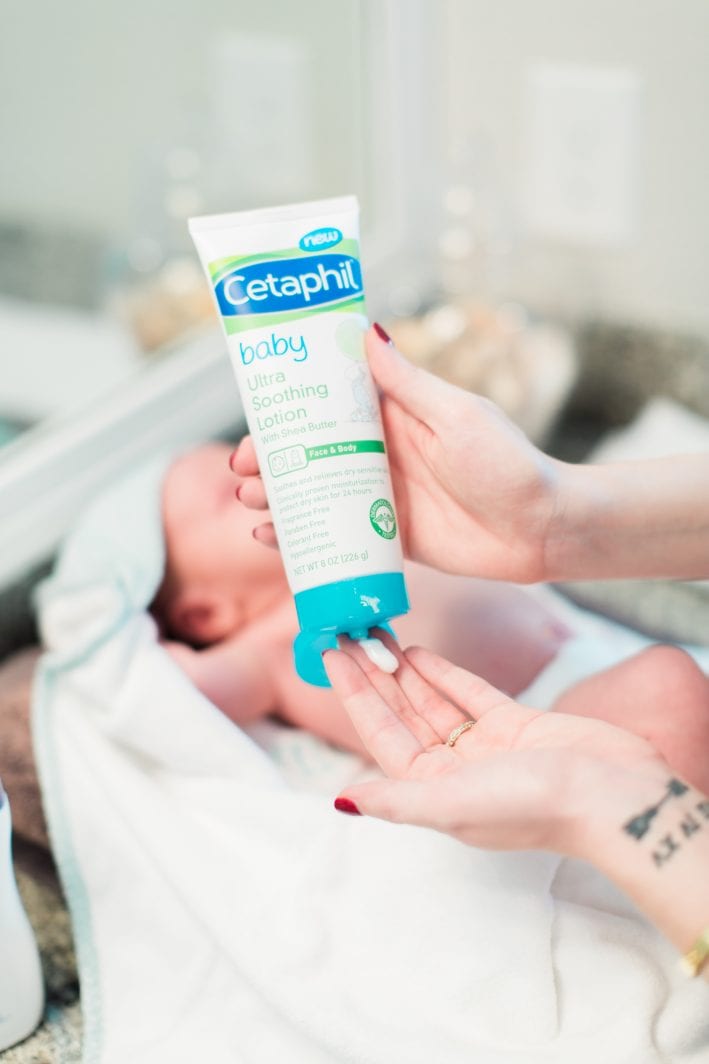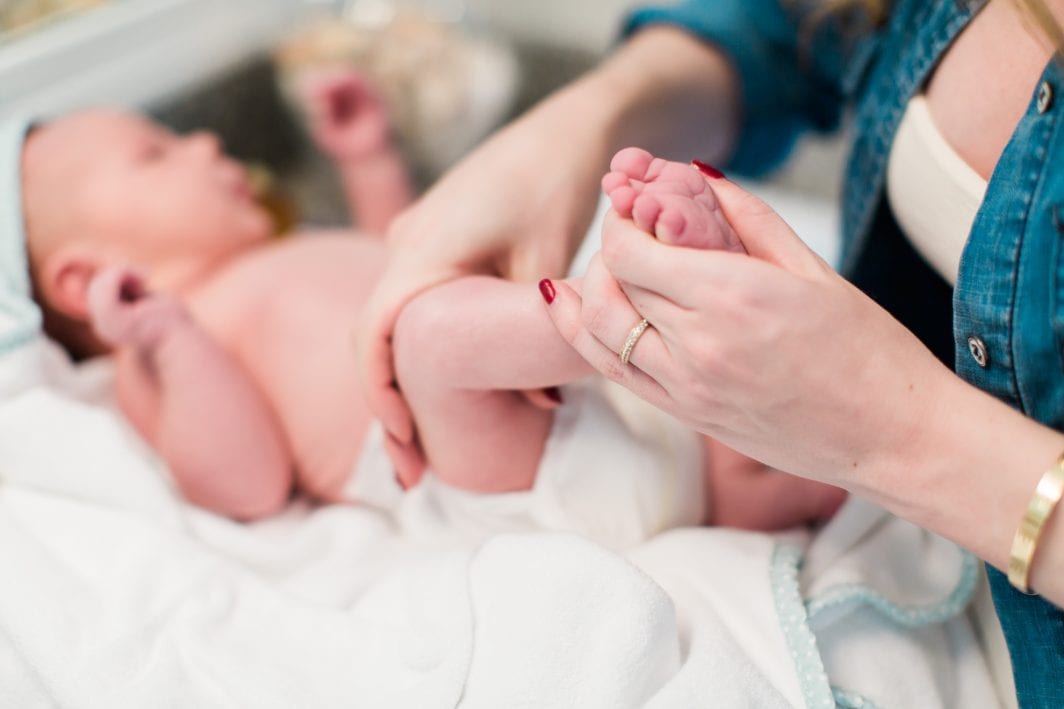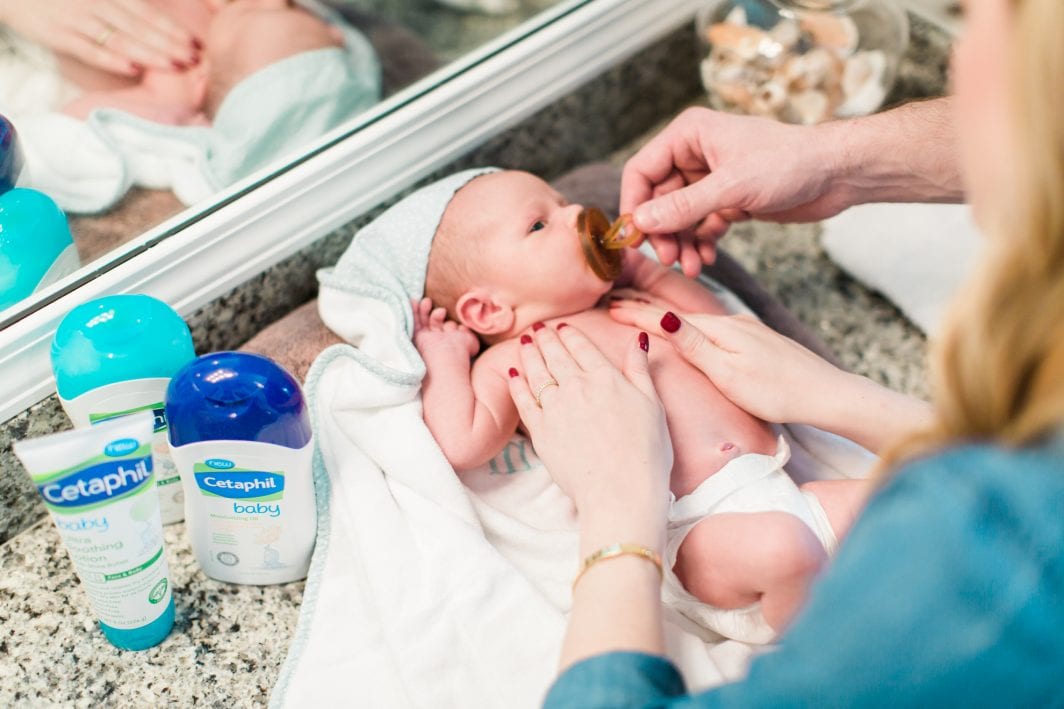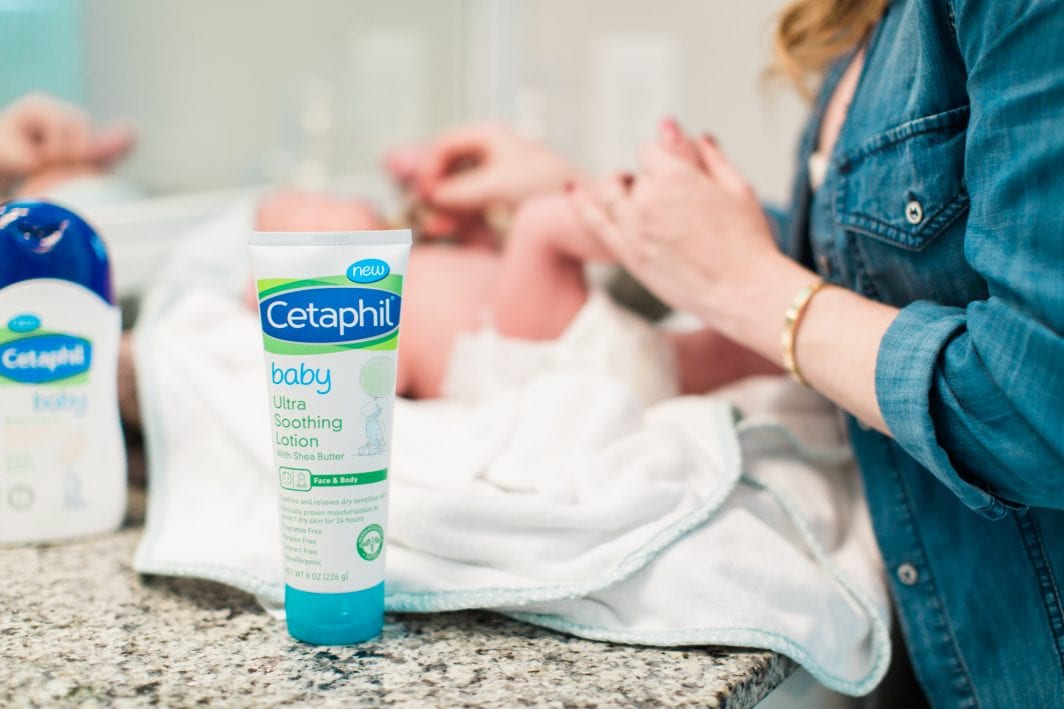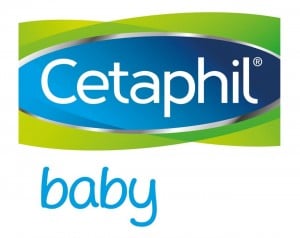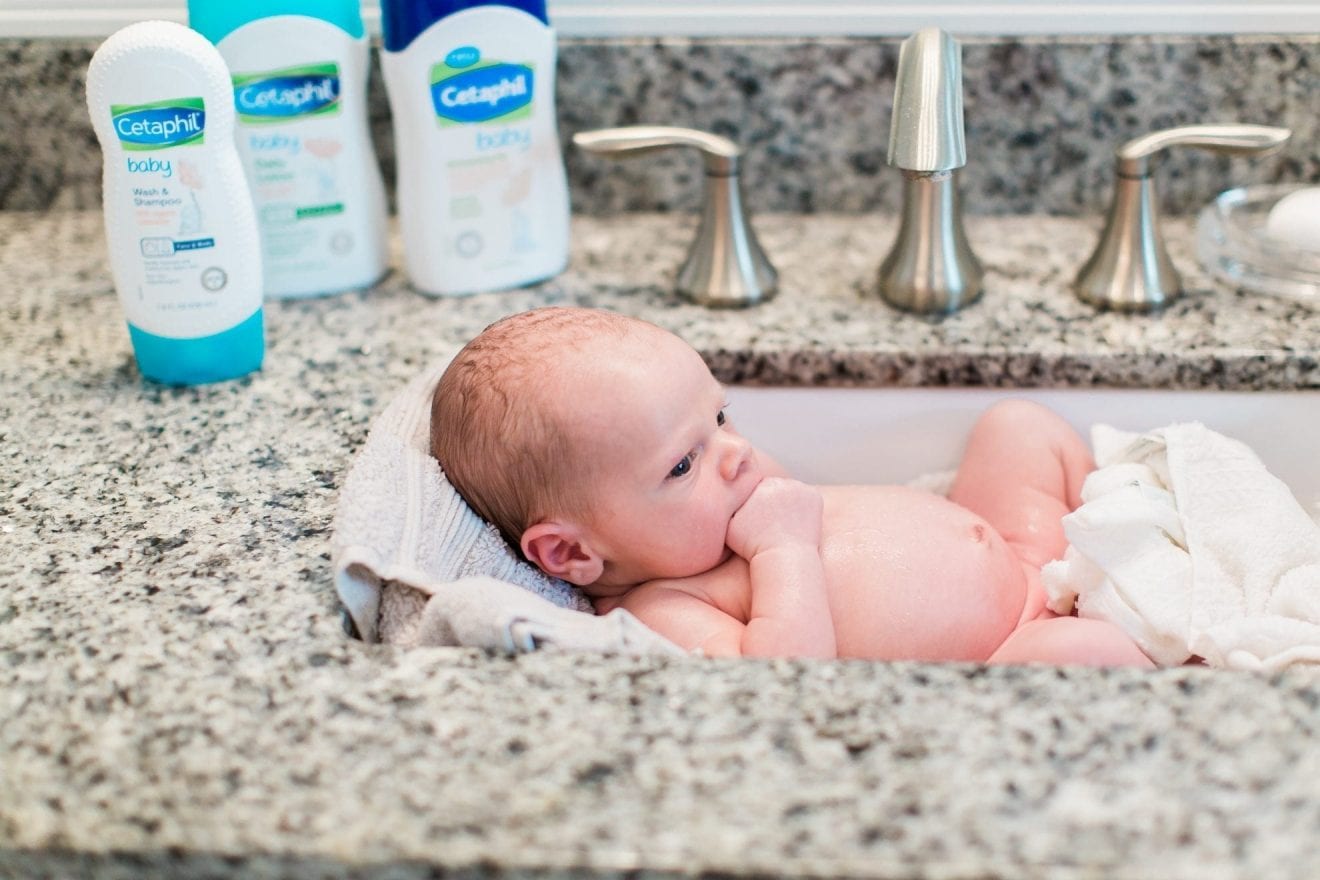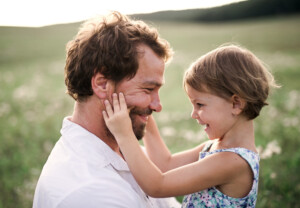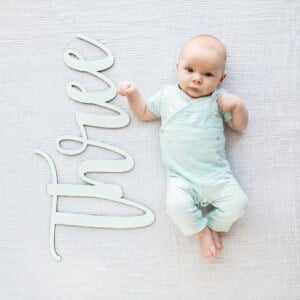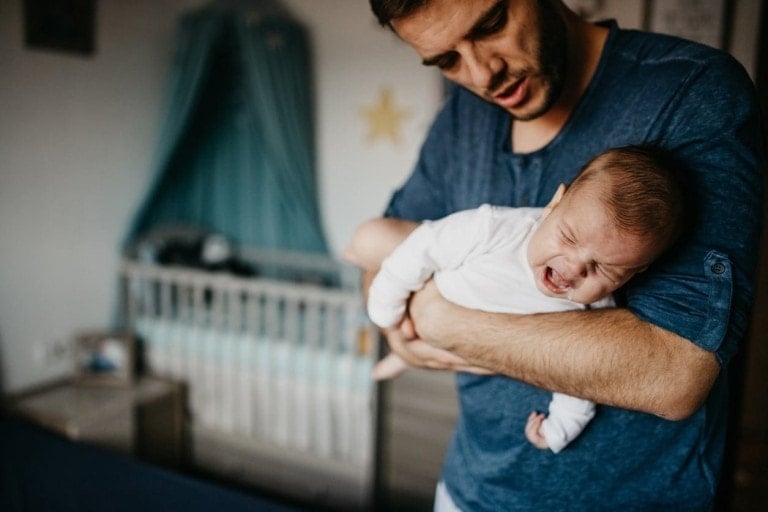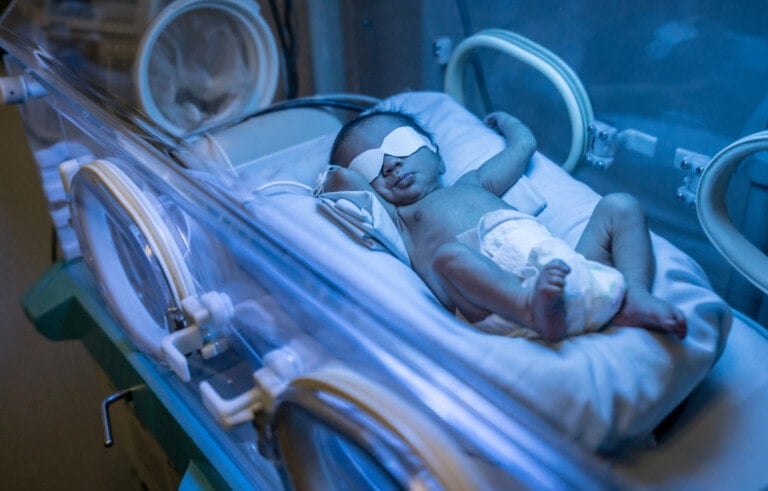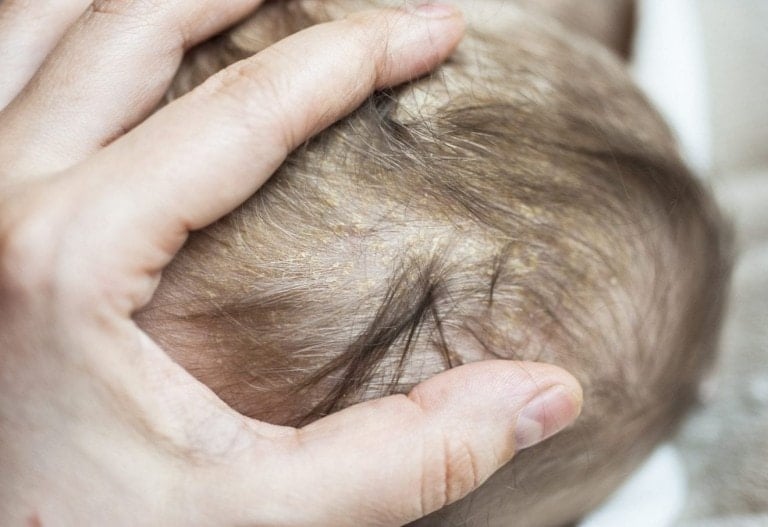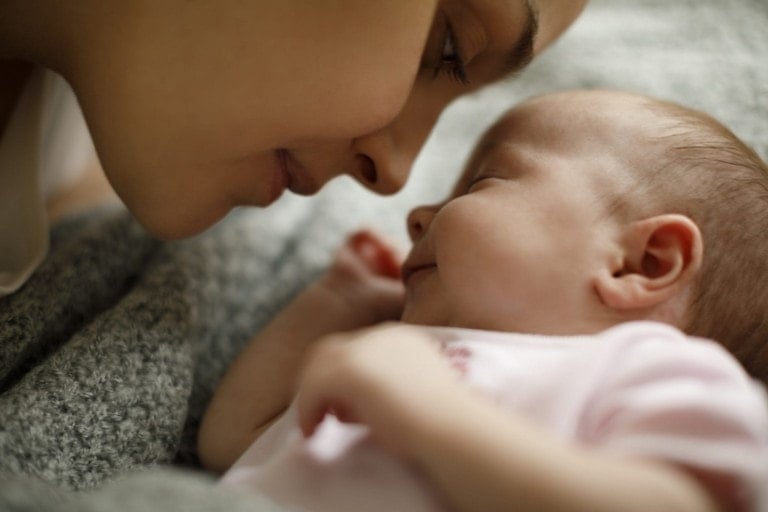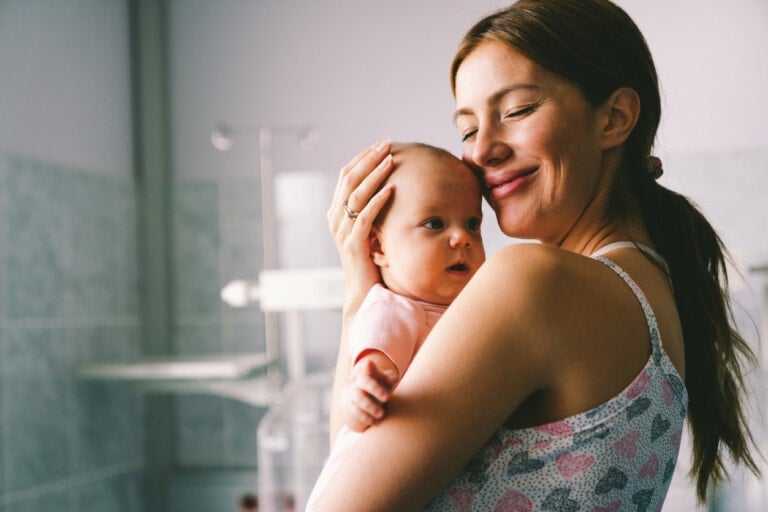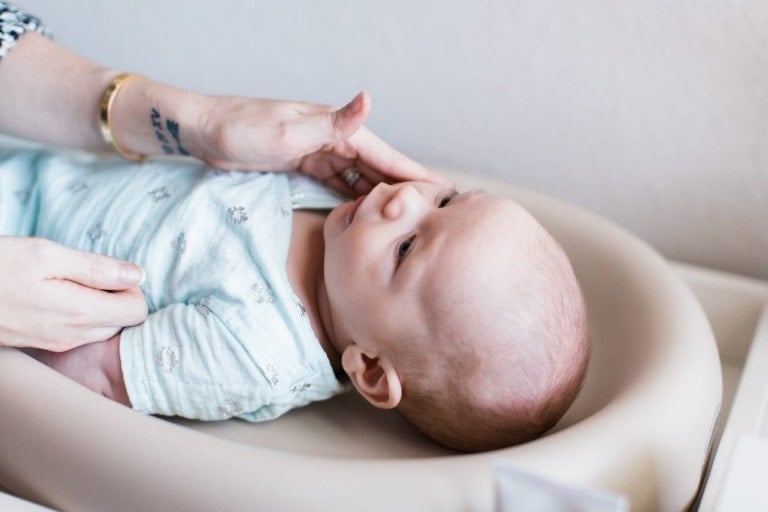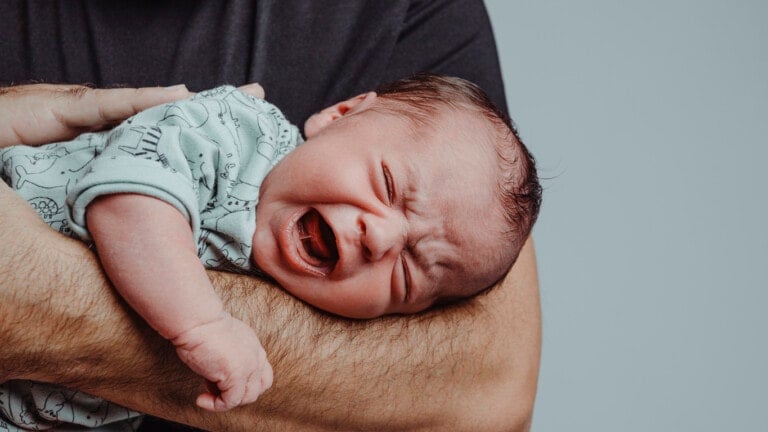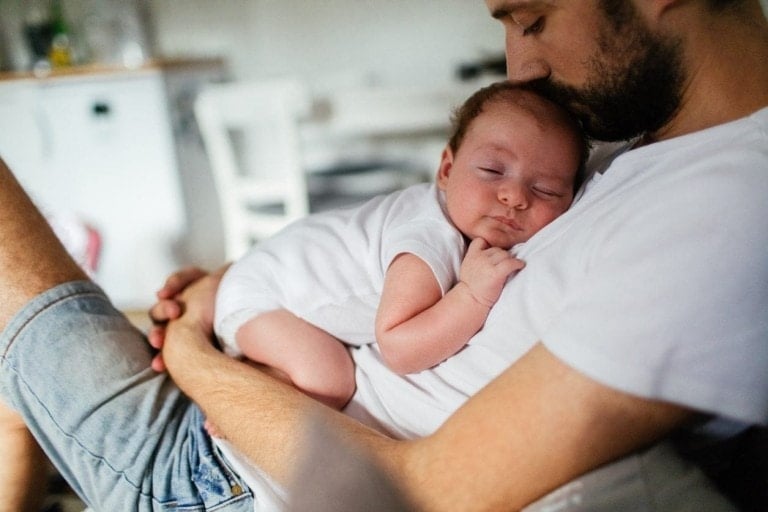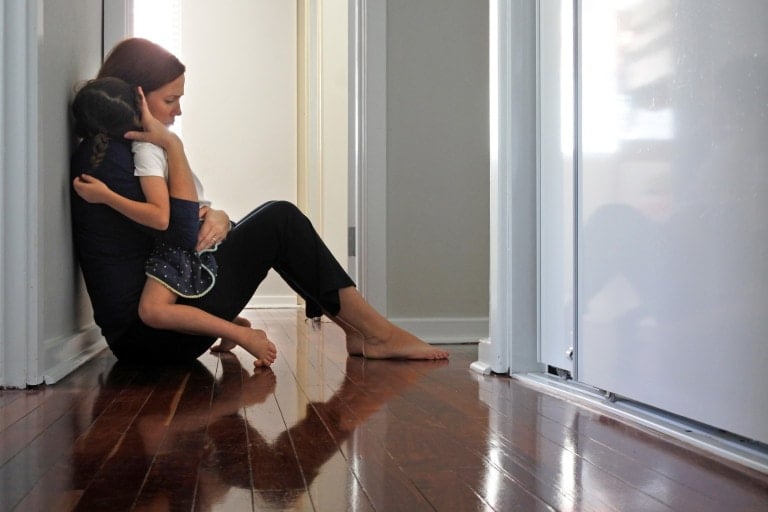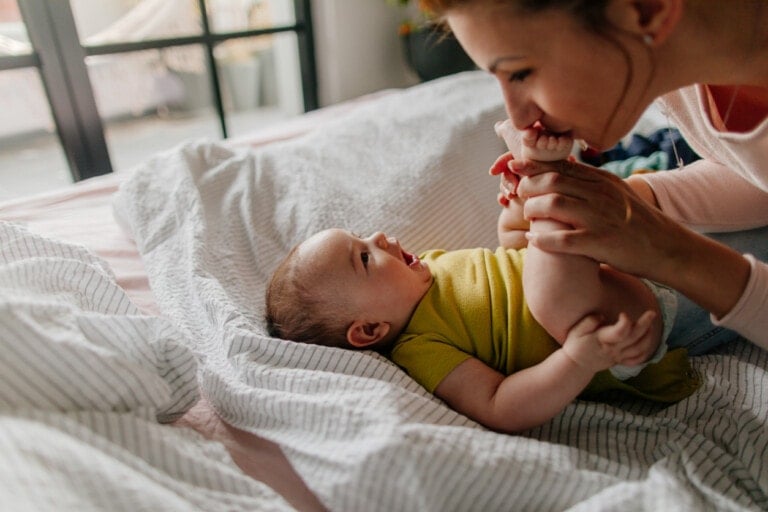Once you give birth to your newborn, you may wonder when you should give your baby their first bath. You actually have to wait to give them a real bath until after their umbilical cord falls off, but before then, you can give baby sponge baths. Why is this? The umbilical cord must remain dry to fall off (which should happen within 14 days after birth). If the umbilical cord gets wet and stays moist, it will remain there. Once the cord has dried and fallen off, you can then submerge your baby’s little body into water and give them a real bath.
Giving your baby their first bath can be intimidating. When you have a screaming baby in the water, that can make any parent anxious. As a postpartum doula, I have personally helped many new parents give their babies their first real baths, and I have to say from my experience about 95% of babies are fine and enjoy their bath. How do we do this? It’s all about making it comfortable for them.
8 Tips for Giving Baby Their First Bath
I have a few tips and tricks I have shown my clients to help you and your baby have a great bath time experience. Here are my eight tips on what you should have and do for your baby’s first bath:
1. Baby Bath Tub
You first need the essentials, and one of those is a good place to bathe your baby. Are you going to do it in the sink? In the tub? Do you have a baby bath tub? You need a safe and comfortable place for baby to sit and enjoy the water as you bathe them. I recommend doing the first bath in the sink so that baby is at counter height for you. Leaning over or bent on your knees is never a good place to start your first bath with baby (especially postpartum!). Place an adult bath towel or your baby bath tub inside the sink to get started!
2. Water Temperature
Next, you’ll want to ensure you have the water at just the right temperature. Not too hot, but not cold either. This is when most first-time parents get flustered. You don’t want to burn your baby (of course), but you also don’t want it to be cold and make them sick.
When you’re ready to get started, get the water going and have it at a temperature that makes it a nice warm bath. To test the water temperature, use the inside of your forearm to feel the water. Our hands are desensitized, so what we think is warm with our hands may be hotter than we realize! That’s usually not the problem, though. The problem is that most parents typically make the water a little too cold for baby. Turning up the warm water makes a world of difference and is the key to a happy bath. No one wants to take a cold bath—especially your baby.
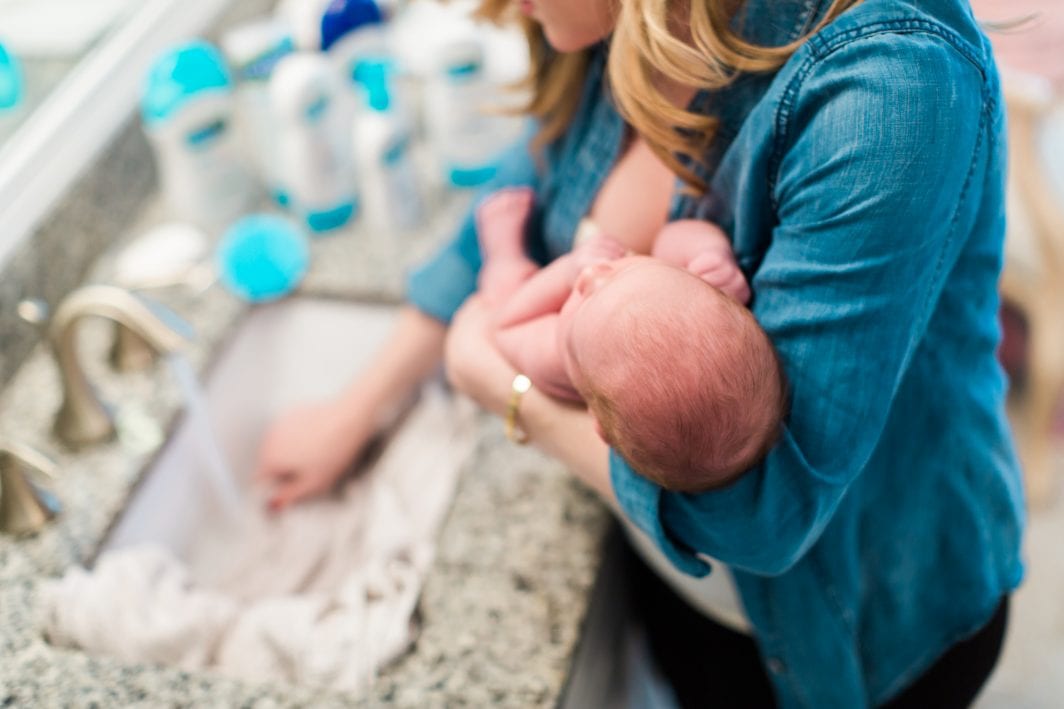
3. Pick a Good Wash
You probably registered for your baby’s soap and shampoo or picked something up at the store for your baby. If you haven’t selected one yet, we highly recommend Cetaphil Baby, which we chose for our family. They are the #1 pediatrician-recommended brand, and after testing it myself and using it on my son, we can’t recommend it enough. When I first tried to choose which wash to use with our baby, I saw that Cetaphil Baby products are paraben-free, mineral oil-free, hypoallergenic, and dermatologist-tested. With all the research I did, it was a no-brainer. I also really liked that many of their products have organic calendula, which is very gentle and calming for sensitive skin–perfect for babies.
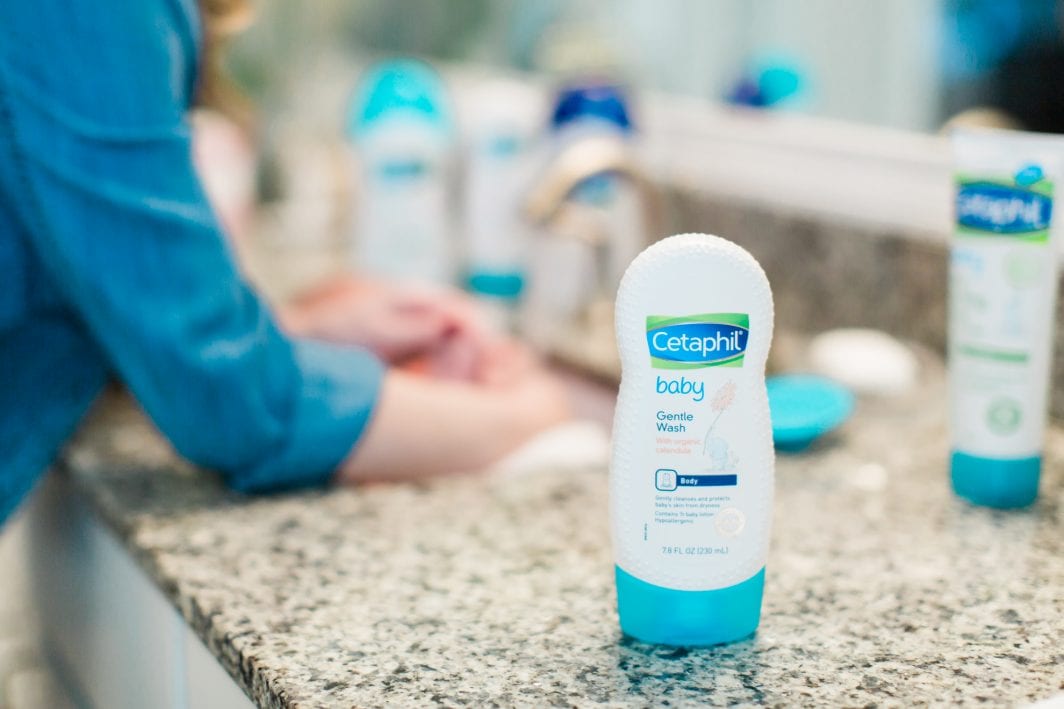
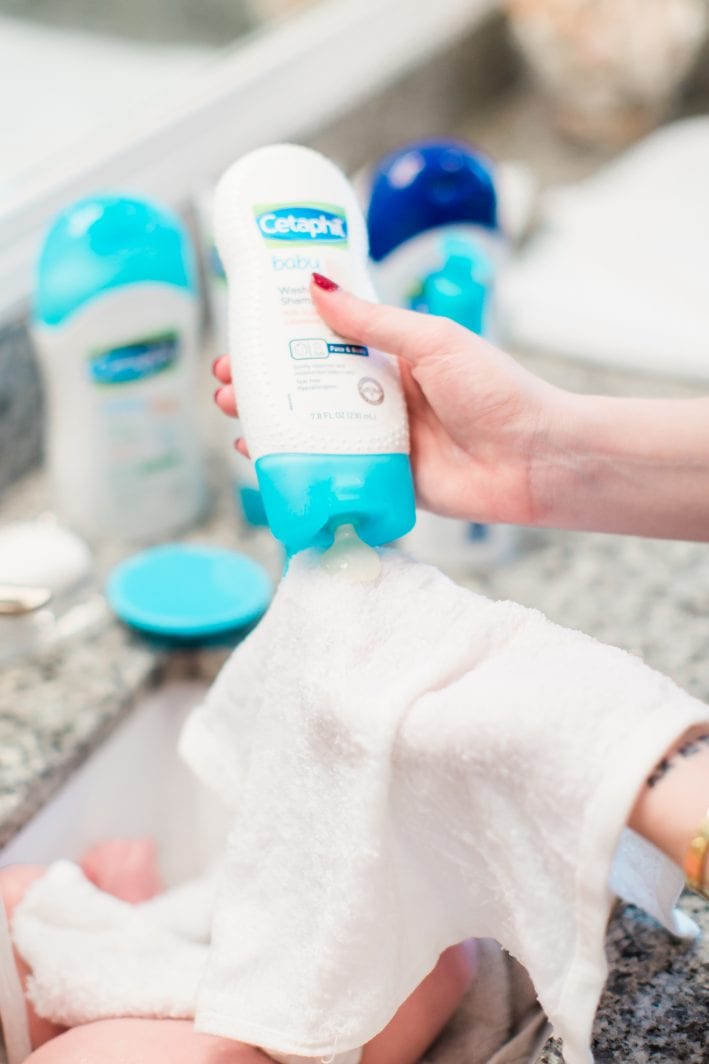
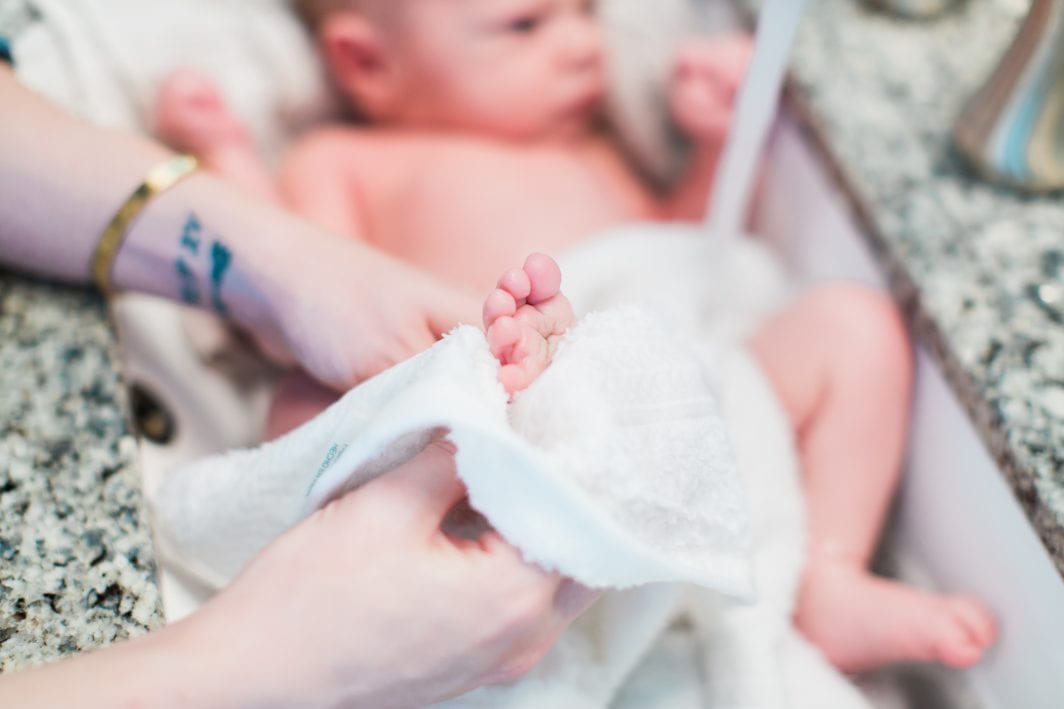
4. Have Everything Close
The number one rule when bathing a baby is NEVER to leave baby alone. You should always be right by their side if they are in or near water. It’s important to keep everything you need during and after the bath close to you and your baby. This is another reason why I like the sink for baby’s first bath because everything is within arm’s reach. If you’re not sure what you will need, here is what I recommend: you should have baby’s shampoo and body wash, a clean diaper, 3-4 washcloths, a hooded drying towel, cotton swabs (if you are using them to clean baby’s ears and eyes), baby lotion and a fresh pair of clothes.
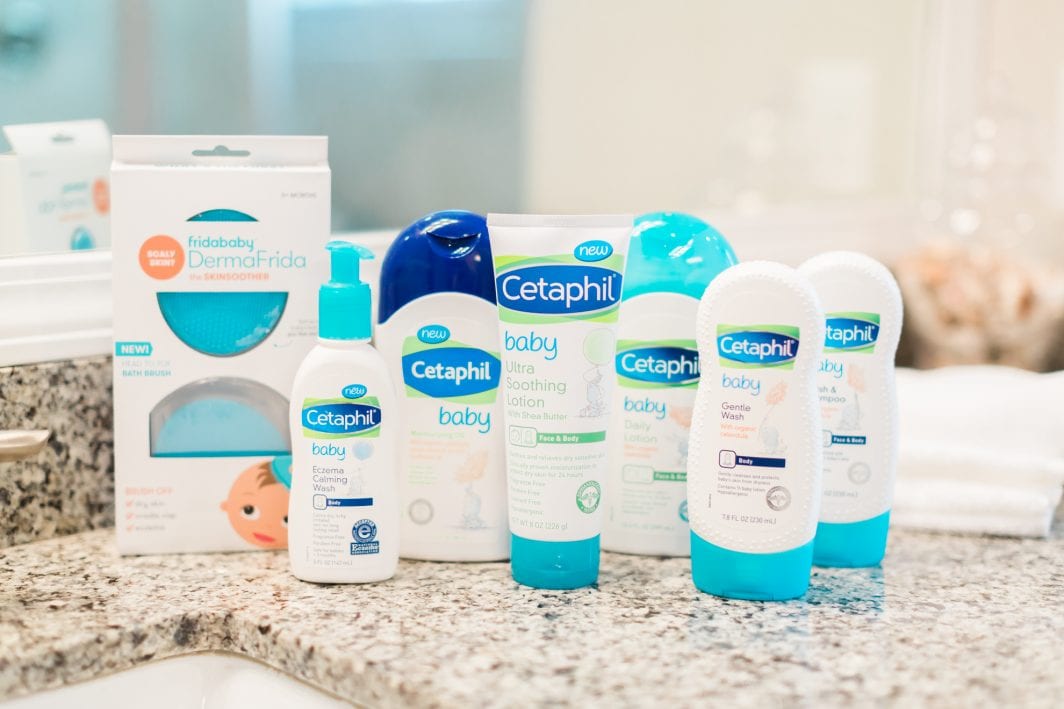
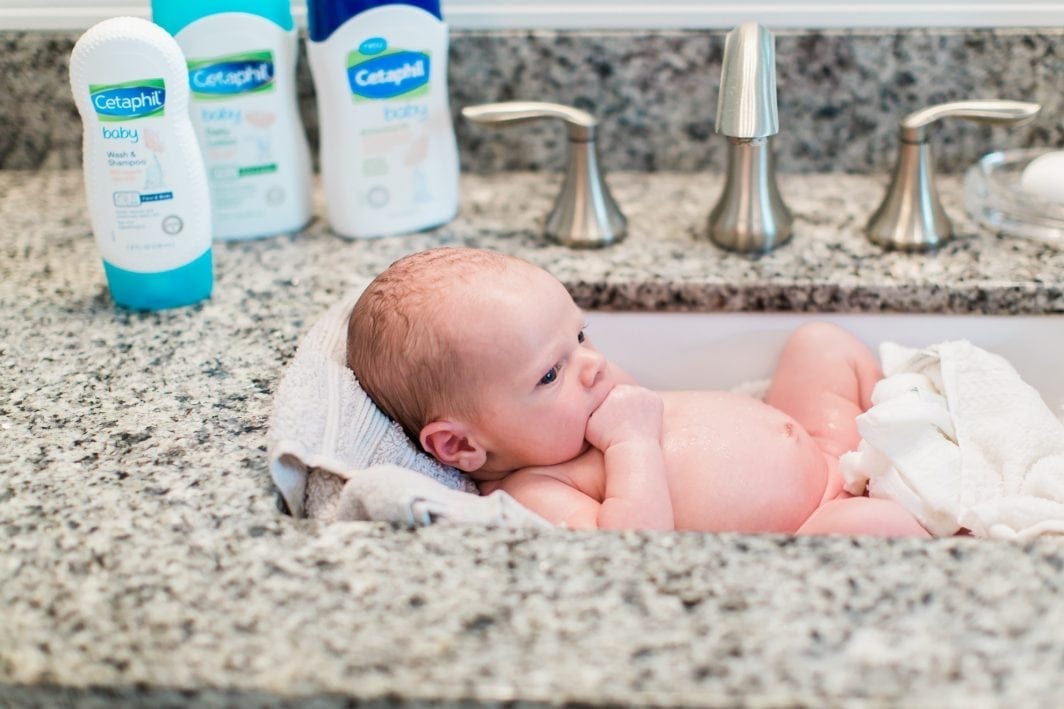
5. Warm Wash Cloth
When you shower or take a bath, the worst part is when you have to get out and grab your towel, right? It’s so cold! We want to stay warm and get dry. It should be no surprise that babies feel the same way. A trick that I have always used to keep babies warm during their baths is to keep a warm, wet washcloth on baby’s abdomen. It helps them stay comfortable as you clean and wash off each part of their body. Every now and then, pour some fresh, warm water on the washcloth to continue to keep them warm. Babies love it!
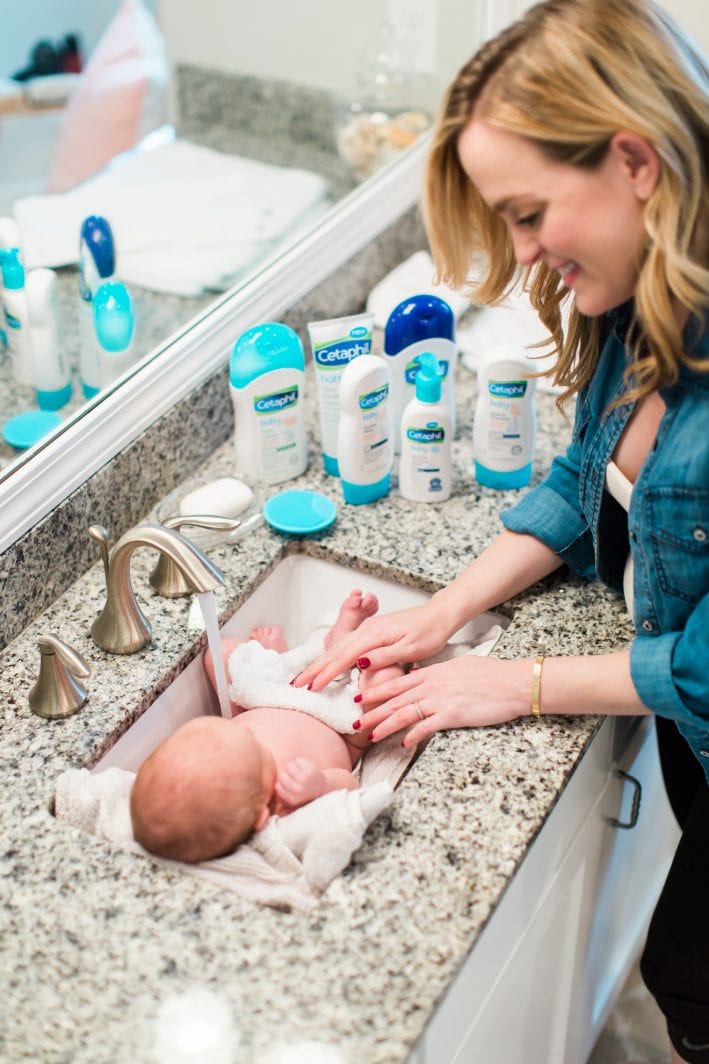
6. Don’t Forget the Neck Rolls
The places that parents forget to clean the most are between the fingers and toes (so much lint and mommy’s hair gets stuck in there) and around baby’s neck. When a baby is breastfeeding or bottle-feeding, it’s normal for milk to dribble down their cheek and into their neck creases. But with those cute baby neck rolls, we often miss in between the creases. This is a spot that we want to make sure that we don’t miss; otherwise, baby will smell like spoiled milk or rotten cheese. Not cute for our cute babies!
7. Washing the Head Last
The last place you want to wash is baby’s head. I leave this for the end of bath time because the fastest place a baby loses heat is from their head. They can get very cold and upset once you get their head wet. Many people may think washing a baby’s diaper area should come last, but that is always the second to last place I wash. I keep many washcloths handy so you can use separate, clean washcloths for the body, diaper area, head, and face. The head is last, so we don’t make baby cold. This will help avoid any tears.
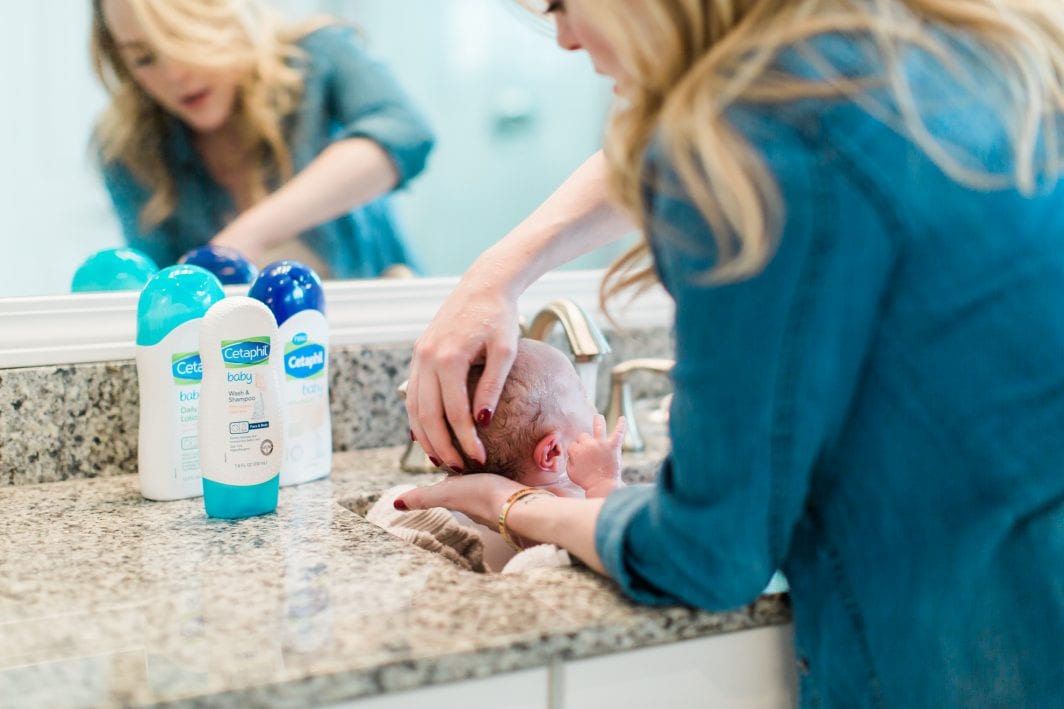
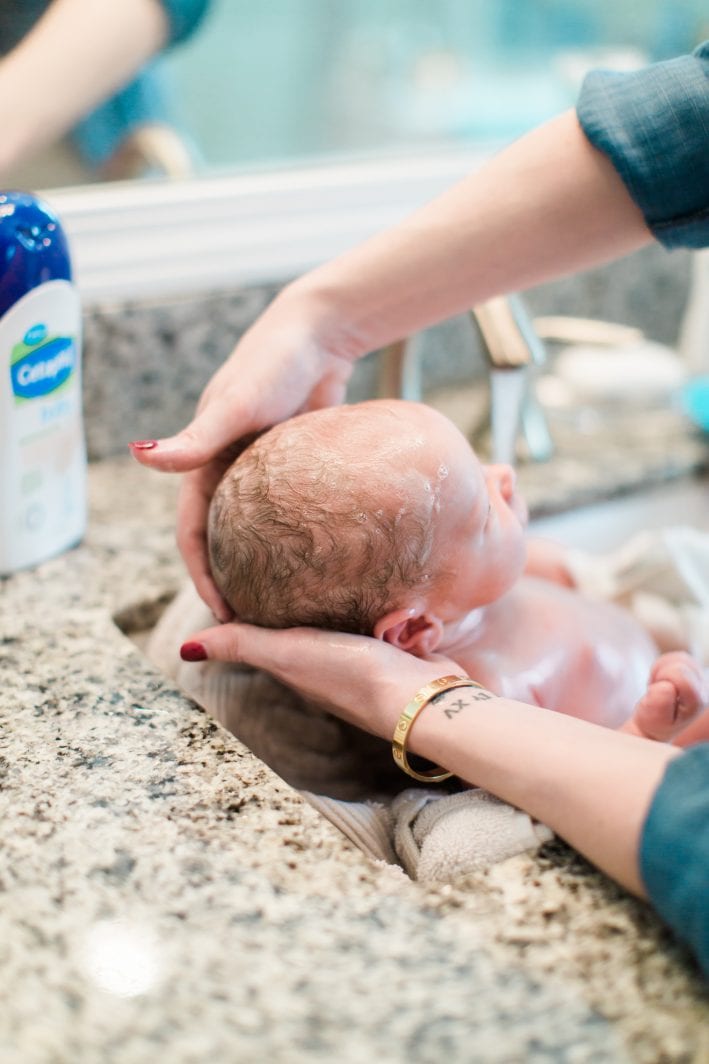
8. Hooded Towel
Once you are finished bathing baby, grab your baby’s hooded towel and place the opposite end on your shoulder, leaving the hooded part pointing towards the floor. Then grab your baby, put them on you on the towel (the towel should be between you and baby, keeping you dry), and pull the hooded part of the towel up and over their head. Voila! Watch the video at the end of the article to learn this bathtime hack.
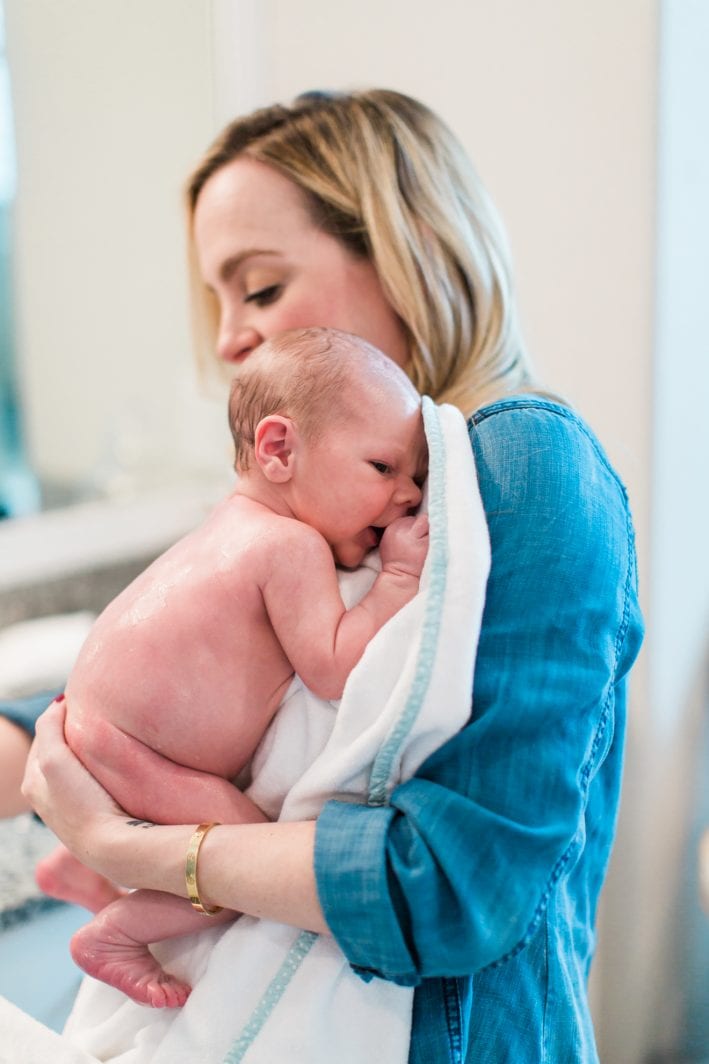
Now nuzzle them close and help baby get dry. This is usually when your baby gets a little upset because they don’t want to get cold. They liked the warm water and are now adjusting to being out. Now you have a clean baby!
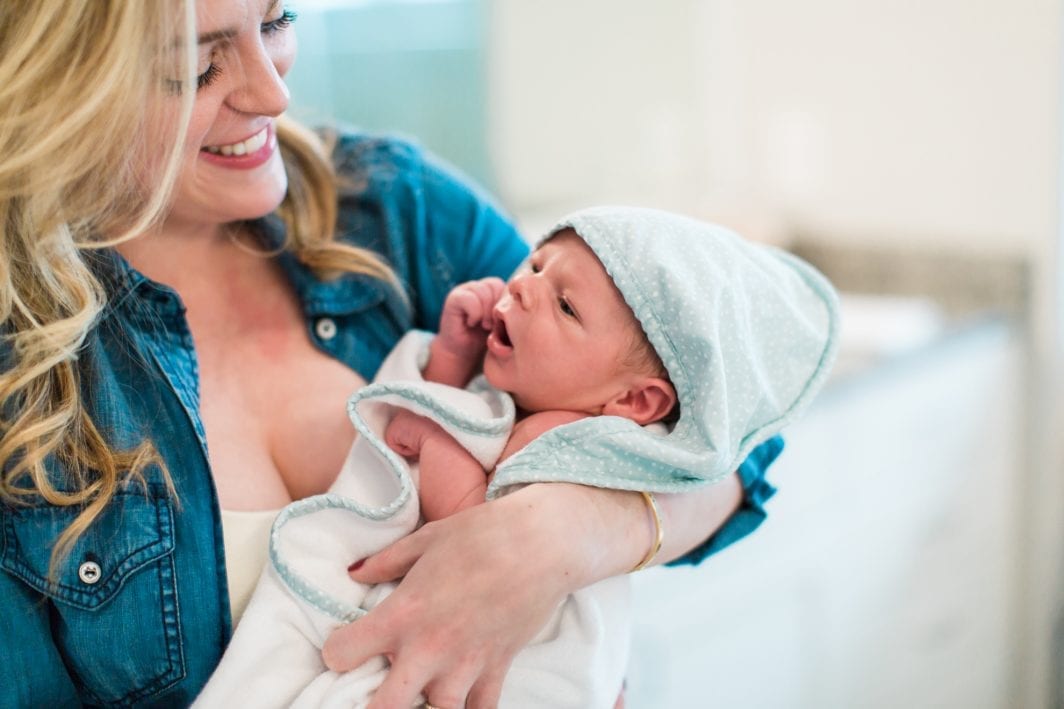
After bath time, I always like to put lotion on babies to ensure we don’t dry out their skin. Bath time can do that, so applying lotion afterward can really help, especially during the winter. After our son’s bath, I like to give him a little massage. This is the perfect way to wind down our bath time together. I use Cetaphil Baby Lotion and start with the arms and hands, then legs and feet, and then finally his tummy and back. This not only takes care of moisturizing his skin but also helps with a better night’s sleep. We love our bath time routine together!
